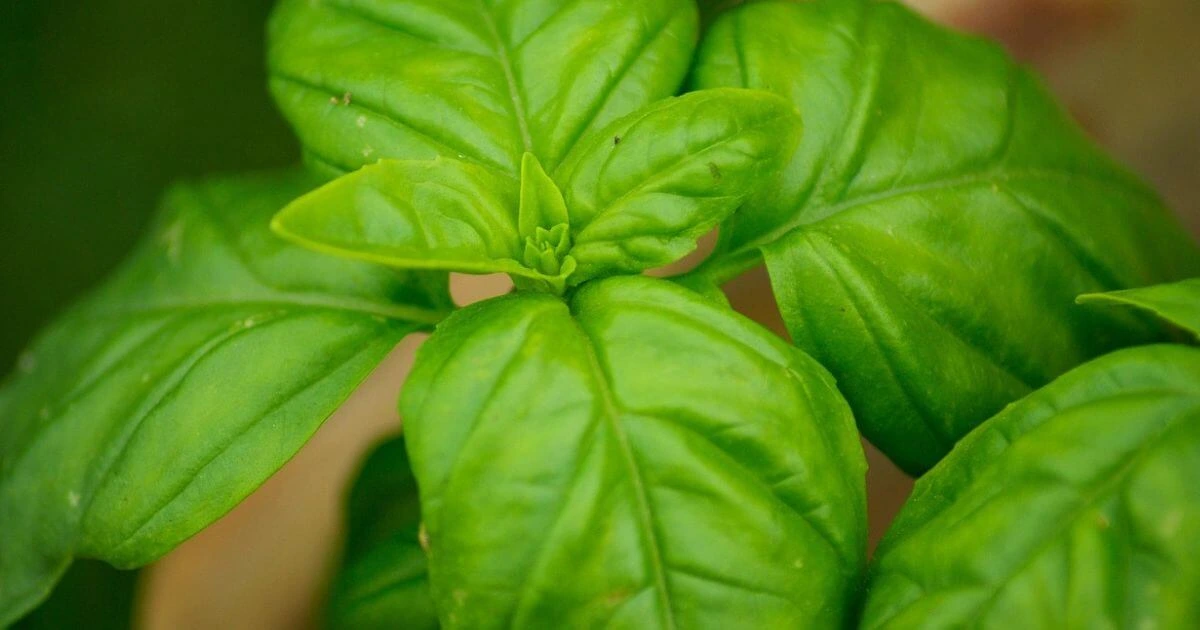Can Dogs Eat Basil? Best Herbs for Dogs
Table of Contents
Picture this: You are chopping fresh basil for a pasta meal, and your dog’s nose twitches with interest. Before you toss them a leaf, you pause—can dogs eat basil? It’s a typical conundrum for pet owners who wish to safely share their love of eating. Herbs like basil can be puzzling, but many are safe and even beneficial to dogs! In this in-depth look, we’ll cover everything from basil’s nutritional benefits to step-by-step recipes and red flags to avoid. Let’s make sure your pup’s snack time is both tasty and safe!
Can Dogs Eat Basil? The Basics
Is Basil Safe for Dogs? Breaking Down the Science
The American Society for the Prevention of Cruelty to Animals (ASPCA) verifies that basil is not hazardous to dogs. But why? Basil contains no potentially hazardous chemicals, such as persin in avocados or theobromine in chocolate. Both fresh and dried basil are harmless, but there’s one catch:
- Fresh basil:Always wash the leaves to eliminate dirt and pesticides. Organic basil is ideal.
- Dried basil:Check labels for additives that are harmful to dogs, such as salt, garlic, and onion powder.
Fun fact: Basil’s scientific name, Ocimum basilicum, comes from the Greek word for “royal”—and your pup can enjoy this “royal herb” in moderation!
Nutritional Benefits of Basil for Dogs: More Than Just Flavor
Basil is more than just a garnish—it’s a nutritional powerhouse! Here’s how it helps your dog’s health.
- Antioxidants (e.g., beta-carotene): Fight free radicals, reducing inflammation in aging joints.
- Vitamin K: Essential for blood clotting. A deficiency could lead to excessive bleeding from minor injuries.
- Magnesium: Supports muscle and nerve function. A single basil leaf offers about 1% of a dog’s daily magnesium needs.
- Fiber: Aids digestion. A sprinkle of basil can ease mild constipation.
Compare this to parsley, another dog-friendly herb: While parsley is high in vitamin C, basil shines for its anti-inflammatory effects.
Risks of Overfeeding Basil: When “Too Much” Becomes a Problem
Even harmless herbs might have negative side effects if used excessively. Overfeeding basil may result in:
- Upset stomach: Symptoms include diarrhea, vomiting, or loss of appetite.
- Allergic reactions: Rare but possible. Watch for itching, swelling, or hives.
- Essential oil danger: Never use basil essential oils (even diluted) on or near dogs—they’re highly concentrated and toxic.
Pro Tip: If your dog snags a large handful of basil, offer water and monitor for 24 hours. Contact your vet if symptoms arise.
Best Herbs for Dogs: A Vet-Approved List

5 Dog-Safe Herbs to Try (Plus Serving Ideas!)
Expand your pup’s palate with these vet-approved herbs:
- Parsley:
- Benefits: Freshens breath, rich in vitamins A and C.
- How to Serve: Mix 1 tsp chopped fresh parsley into food. Avoid curly parsley—it’s less nutritious.
- Mint:
- Benefits: Soothes nausea; perfect for car rides.
- How to Serve: Steep 1–2 fresh mint leaves in warm water for a calming “pup tea.”
- Oregano:
- Benefits: Antibacterial properties support immune health.
- How to Serve: Sprinkle a pinch of dried oregano on meals (avoid oregano oil).
- Thyme:
- Benefits: Aids respiratory health; great for dogs with kennel cough.
- How to Serve: Bake thyme into homemade dog treats.
- Rosemary:
- Benefits: Boosts circulation and skin health.
- How to Serve: Infuse rosemary in olive oil for a coat-shining drizzle.
How to Introduce Herbs to Your Dog’s Diet: A 7-Day Plan
New foods may irritate delicate stomachs. Try a gradual approach:
- Days 1–2: Add a pinch of chopped basil to their regular food.
- Days 3–4: If no reaction, introduce a second herb (e.g., parsley).
- Days 5–7: Rotate herbs every other day to test tolerance.
Watch for: Loose stools, itching, or lethargy. Stop immediately if these occur.
How to Safely Serve Basil to Your Dog
Can Dogs Eat Fresh Basil? A Step-by-Step Safety Guide
- Wash Thoroughly: Soak fresh basil in water for 5 minutes to remove pesticides.
- Chop Finely: Prevent choking by mincing leaves (especially for small breeds).
- Mix with Food: Stir into wet food, yogurt, or pumpkin puree.
- Portion Control: Start with 1 leaf for small dogs, 2–3 for larger breeds.
Avoid: Basil stems—they’re tough to digest and may cause blockages.
Is Dried Basil Good for Dogs? The Sodium Dilemma

Dried basil is safe but comes with caveats:
- Sodium Content: Many dried herbs contain added salt. A dog’s daily sodium limit is ~100mg per 10 lbs of body weight.
- Preservatives: Look for “100% pure dried basil” with no additives.
Serving Hack: Rehydrate dried basil in warm water for 10 minutes to reduce crunchiness.
How Much Basil to Give a Dog? A Weight-Based Chart
| Dog Size | Fresh Basil (Daily) | Dried Basil (Daily) |
|---|---|---|
| Small (≤20 lbs) | 1–2 leaves | ⅛ tsp |
| Medium (21–50 lbs) | 2–3 leaves | ¼ tsp |
| Large (51+ lbs) | 3–4 leaves | ½ tsp |
Note: These are general guidelines. Adjust for dogs with kidney issues or allergies.
Simple Basil-Infused Dog Treat Recipes
1. Basil & Pumpkin Bites
- Ingredients:
- 1 cup canned pumpkin (unsweetened)
- 2 tbsp fresh basil, chopped
- 1 egg
- 1½ cups oat flour
- Instructions:
- Preheat oven to 350°F (175°C).
- Mix all ingredients into a dough.
- Roll into 1-inch balls and flatten slightly.
- Bake for 20–25 minutes until firm.
- Cool completely before serving. Store in the fridge for up to 5 days.
2. Basil Yogurt Drops
- Ingredients:
- ½ cup plain Greek yogurt (no xylitol!)
- 1 tsp fresh basil, finely chopped
- 1 tsp honey (optional)
- Instructions:
- Blend yogurt, basil, and honey.
- Drop teaspoon-sized dots onto parchment paper.
- Freeze for 2–3 hours. Serve as a refreshing summer treat!
Want more healthy snack ideas? Check out our guide to dog-safe seaweed recipes for tasty, nutrient-packed treats your pup will love!
Herbs to Avoid for Dogs: The “Never Ever” List
Toxic Herbs You Should Never Feed
- Garlic & Chives: Contain thiosulfate, which destroys red blood cells, leading to anemia.
- Nutmeg: Contains myristicin, causing hallucinations, seizures, or organ damage.
- Oregano Oil: 10x stronger than fresh oregano—can cause liver damage.
Surprising Danger: Comfrey, often used in herbal teas, contains alkaloids that harm the liver.
Signs of Herb Toxicity in Dogs: Act FAST
- Mild Symptoms: Drooling, vomiting, diarrhea.
- Severe Symptoms: Tremors, collapse, pale gums.
What to Do:
- Take any remaining herb out of your dog’s reach.
- Contact your veterinarian or the ASPCA’s Poison Control Hotline (888-426-4435).
- Keep a sample of the plant for identification.
FAQs About Dogs and Herbs
Q: Can dogs eat basil pesto?
A: No! Most pesto contains garlic, pine nuts, and cheese—all risky for dogs.
Q: What if my dog eats a whole basil plant?
A: Keep an eye out for stomach trouble. The herb itself is not harmful, but excessive doses can induce moderate diarrhea.
Q: Are basil stems safe?
A: Avoid them—they’re fibrous and hard to digest. Stick to leaves.
Conclusion
So, can dogs eat basil? Yes, when served wisely! Basil, whether fresh or dried, provides taste and minerals to your dog’s food, but use in moderation. Pair it with other safe herbs such as parsley or rosemary, but avoid garlic and chives. Always start with small quantities and visit your veterinarian if your dog has any health issues.

